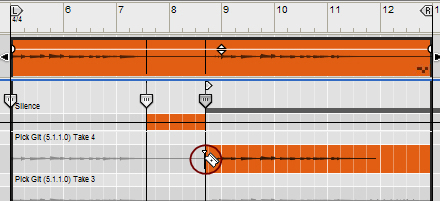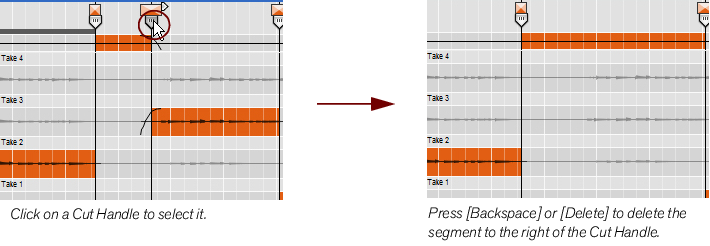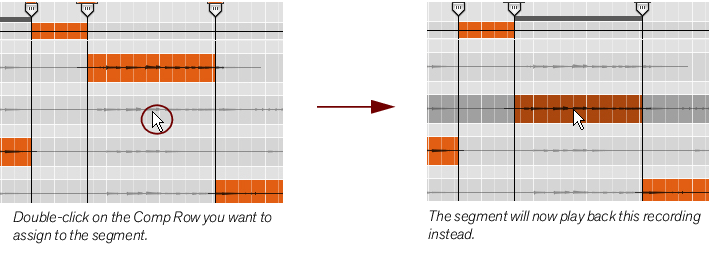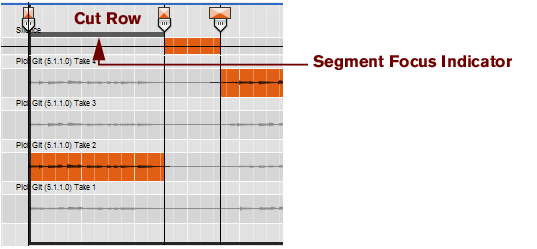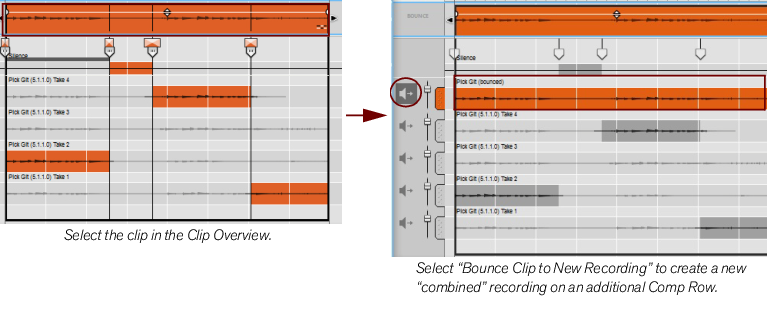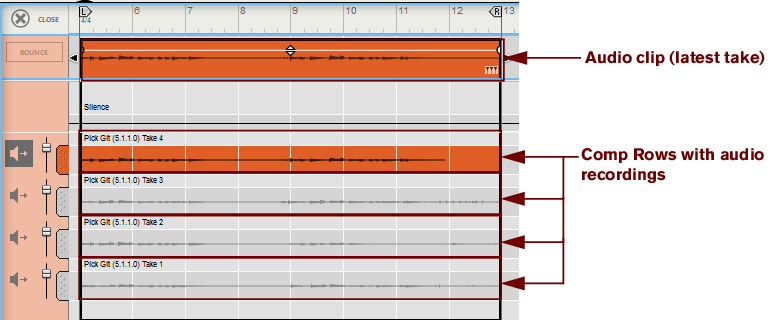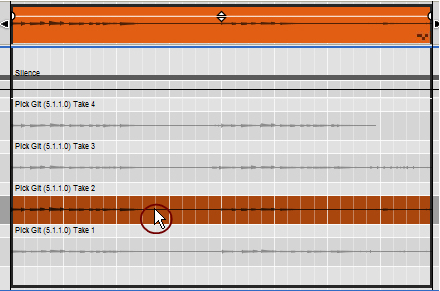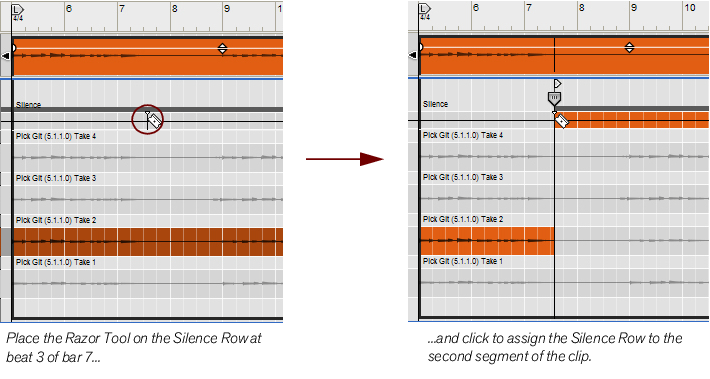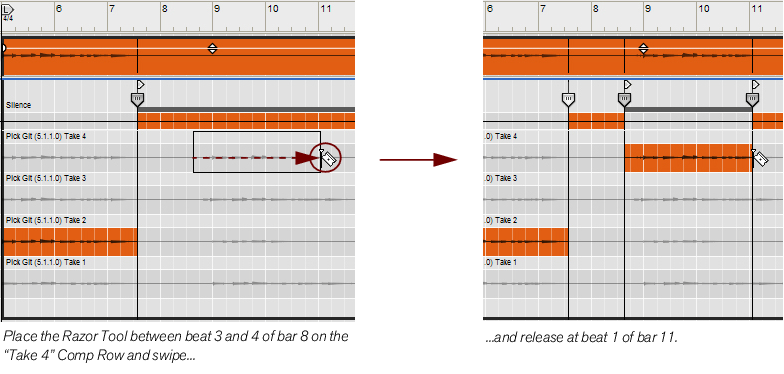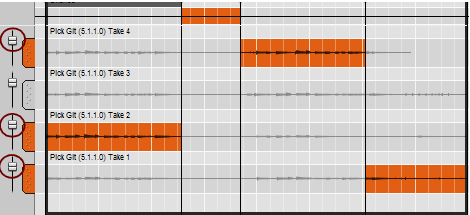In this section we will describe procedures that are specific to audio editing in Comp clips. At the end of this section is a detailed example on how to use the various procedures to create a complete comped audio clip - see “Creating a comped audio clip”. General audio editing procedures are described in “Editing audio in the Comp Editor”.
|
|
|
•
|
|
|
If you’re happy with the result and don’t plan to edit the clip any further, you can use the “Delete Unused Recordings” function to delete the recordings on the original Comp Rows and reduce the file size (see “Delete Unused Recordings”). If file size is not an issue, you can keep the original takes in the clip. This way you can switch to Comp Mode at any time if you need to edit the comp.
|
|
If you have recorded more than one loop cycle of audio in Loop Mode (see “Recording audio in Loop mode”), or recorded over or into an existing audio clip (see “Recording over or into an existing audio clip”), each recording has been placed on a separate Comp Row. If you like, you can now select the best parts (segments) of the recordings on the various Comp Rows and create a final “comped” audio clip. All editing described below is non-destructive and can be changed at any time:
Audition the recordings on the Comp Rows to decide which recordings to use at what position in the comped clip. Select the Speaker Tool and click-hold at desired positions on the different Comp Rows (see “Speaker Tool” for details).
|
|
|
|
The clip is then also automatically set to Single Take mode, which makes it possible to edit the clip in Slice Edit mode, where you can stretch and quantize the audio etc. (see “Editing audio in Slice Edit mode”), or in Pitch Edit mode, where you can correct and edit the pitches of monophonic audio recordings (see “Editing audio in Pitch Edit mode”).
